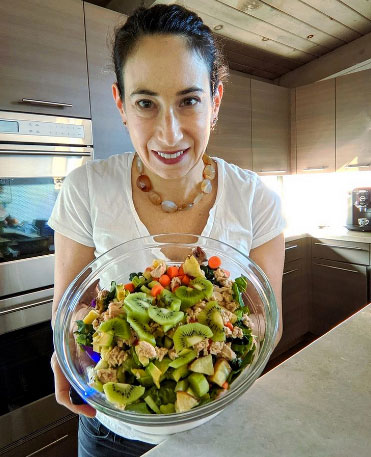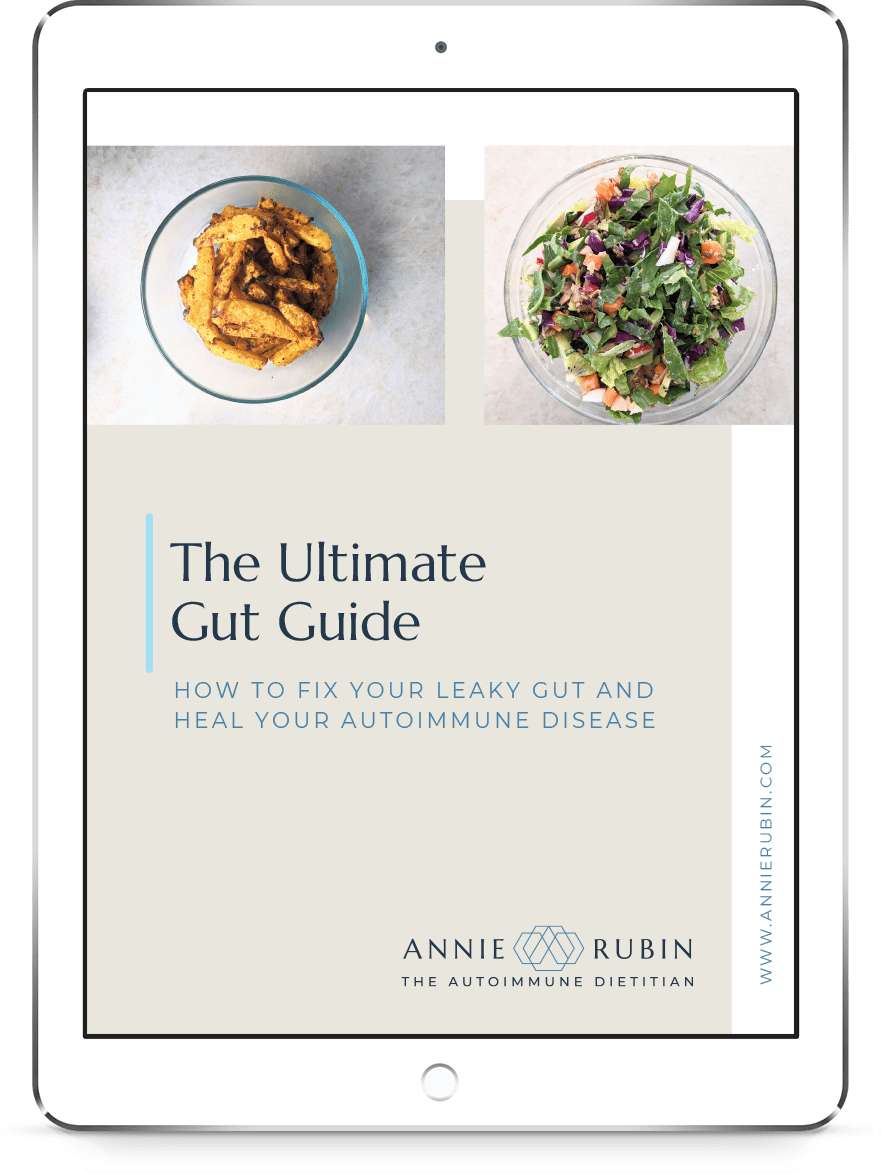 The Specific Carbohydrate Diet (SCD) is a unique elimination diet that is effective for inflammatory digestive disorders like inflammatory bowel disease and celiac disease. In my personal opinion, it’s one of the hardest elimination diets to do. But, the results can be pretty remarkable. Let’s learn more about this diet, who it would work for, and what it entails.
The Specific Carbohydrate Diet (SCD) is a unique elimination diet that is effective for inflammatory digestive disorders like inflammatory bowel disease and celiac disease. In my personal opinion, it’s one of the hardest elimination diets to do. But, the results can be pretty remarkable. Let’s learn more about this diet, who it would work for, and what it entails.
Why Choose the Specific Carbohydrate Diet?
The SCD dates back to the 1920’s. Dr. Sidney Haas developed the diet as a treatment for celiac disease. Then, in the late 1980’s, Elaine Gottschall published a book called “Breaking the Vicious Cycle”, which is a SCD guide for the general public. Gottschall used the SCD on her daughter who was suffering from Inflammatory bowel disease. Because her condition improved so much, Gottschall decided to publish the diet in a book to help other families in her situation.
The specific carbohydrate diet is thought to improve digestion and the gut microbes in the intestinal lining. The theory behind the diet implies that people with inflammatory bowel issues lose the ability to digest certain carbohydrates. Therefore, these undigested carbs remain in the intestine and start to ferment. As a consequence, this triggers an overgrowth of harmful bacteria that leads to inflammation.
This diet works best for those with inflammatory digestive issues, like Crohn’s Disease, Ulcerative Colitis and Celiac Disease. This diet may also work for those with juvenile idiopathic arthritis. Additionally, Gottschall also claims that this diet can help people with diverticulitis, cystic fibrosis and chronic diarrhea. However, there are no studies backing these claims.
What Does the SCD Include and Prohibit?
The following foods are allowed on the SCD:
- Fresh meat, poultry, fish and shellfish
- All vegetables except potato, sweet potato and turnips
- All fruit
- Eggs
- Sharp cheddar, colby, swiss and dry curd cottage cheese
- Legumes except soybean, chickpea and bean sprouts
- Honey
- All natural peanut butter
- All nuts, peanuts and nut flours
- Additive-free oils
- White vinegar, cider and mustard
This diet cuts out all processed foods, powdered spices, seaweed, most sugars, candy, chocolate, all grains and high lactose dairy.
How Do the SCD Phases Work?
The first phase of the diet consists of only a few safe foods that are known to not trigger diarrhea. They can vary based on the person, but are generally recommended to be the following:
- Homemade broth
- Homemade applesauce (using peeled apples)
- Diluted fruit juice and/or homemade gelatin/jello
- Mashed chicken or other meats
- Eggs (as long as no sensitivity exists)
- Cooked mashed vegetables
This first phase is followed for around 2-3 days. If symptoms stabilize, then you can move onto Phase 2 where more solid foods are gradually reintroduced. All vegetables and fruits should be peeled, seeded and well cooked. Overripe bananas are allowed. The most common vegetables to start with are green beans, peppers, mushrooms, avocado, tomato, peaches, pineapple and plums. Also, SCD yogurt can be added after the first 2 days. The yogurt is a very important part of the diet. It helps repopulate the gut with good bacteria, which is obviously very important for digestion and balance.
Phase 2 allows the reintroduction of nut flours, lentils and specific beans, as well as more solid meats. As symptoms continue to improve, you can challenge raw fruits and vegetables for tolerance.
Phase 3 includes illegal foods like grains and high lactose dairy. However, some experts recommend not adding these in at all. Others believe that it is good to add more variety in the diet. But, most people wait almost a year to move to phase 3.
What Does the Research Say?
A majority of the research on SCD is within the pediatric population. Most of the studies are small but do show positive results with this diet. A 2020 randomized control trial of 18 patients achieved clinical remission following either the SCD, modified SCD or a whole foods diet. The more restrictive the diet was, the more the inflammation was resolved. Results are mixed for the adult population. A 2016 study asked participants their opinion on the SCD. After 6 months, 42% reported clinical remission. However, in a 2022 randomized control trial comparing SCD to the mediterranean diet, the outcome was different. Researchers found that the SCD was not superior to the mediterranean eating pattern in achieving remission or lowering inflammation.
Anecdotally I’ve seen good results with the SCD. However, it is a difficult diet to follow. If you want to try it to help improve your autoimmune disease symptoms, make sure you seek out a qualified professional to guide you through it. If you want to learn more about living gracefully with your autoimmune disease, be sure to follow me on my socials (Instagram, Facebook and YouTube), or contact me to schedule a free discovery call.


